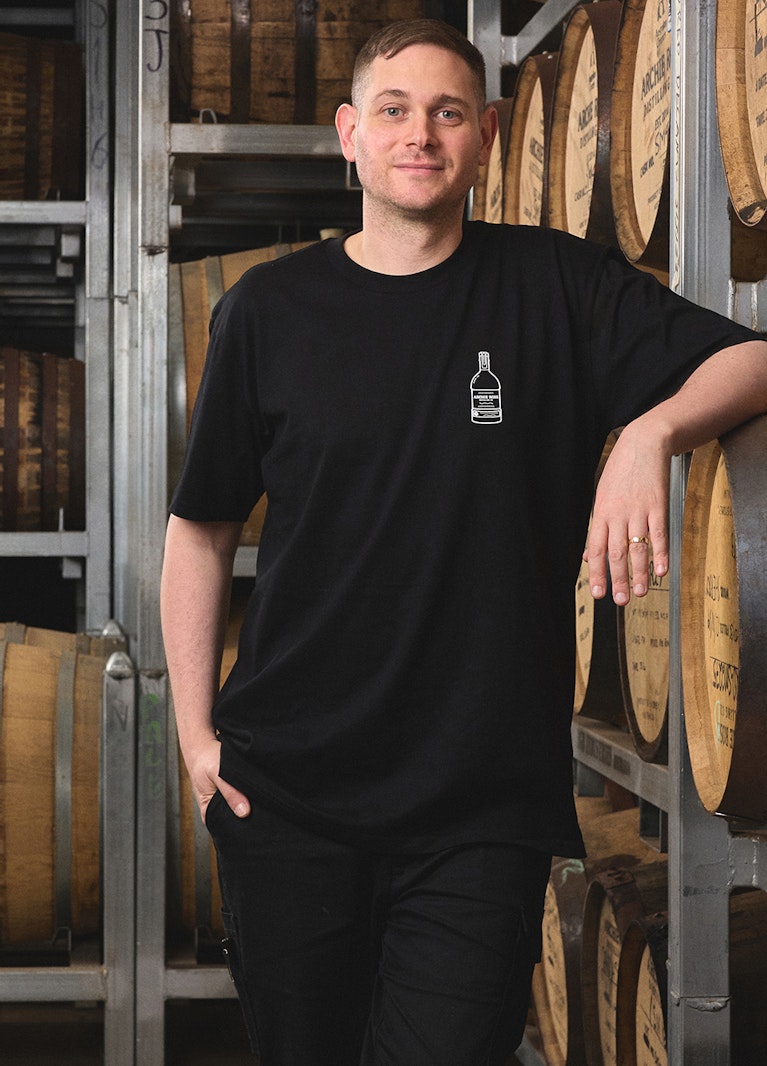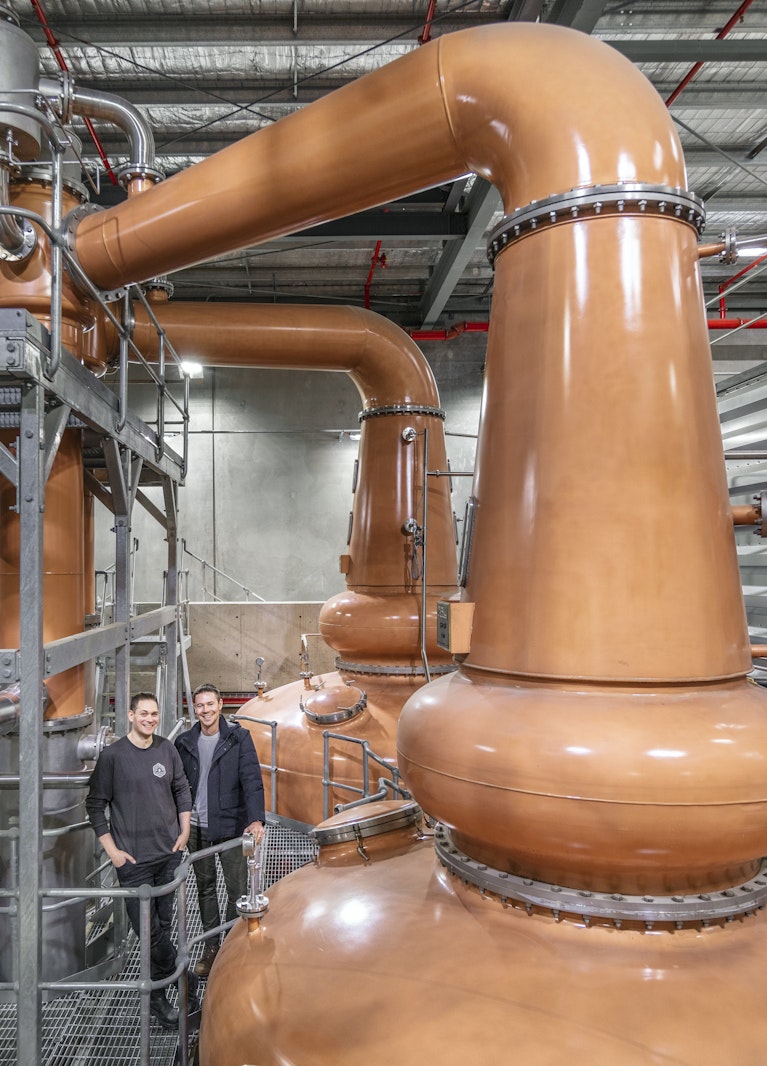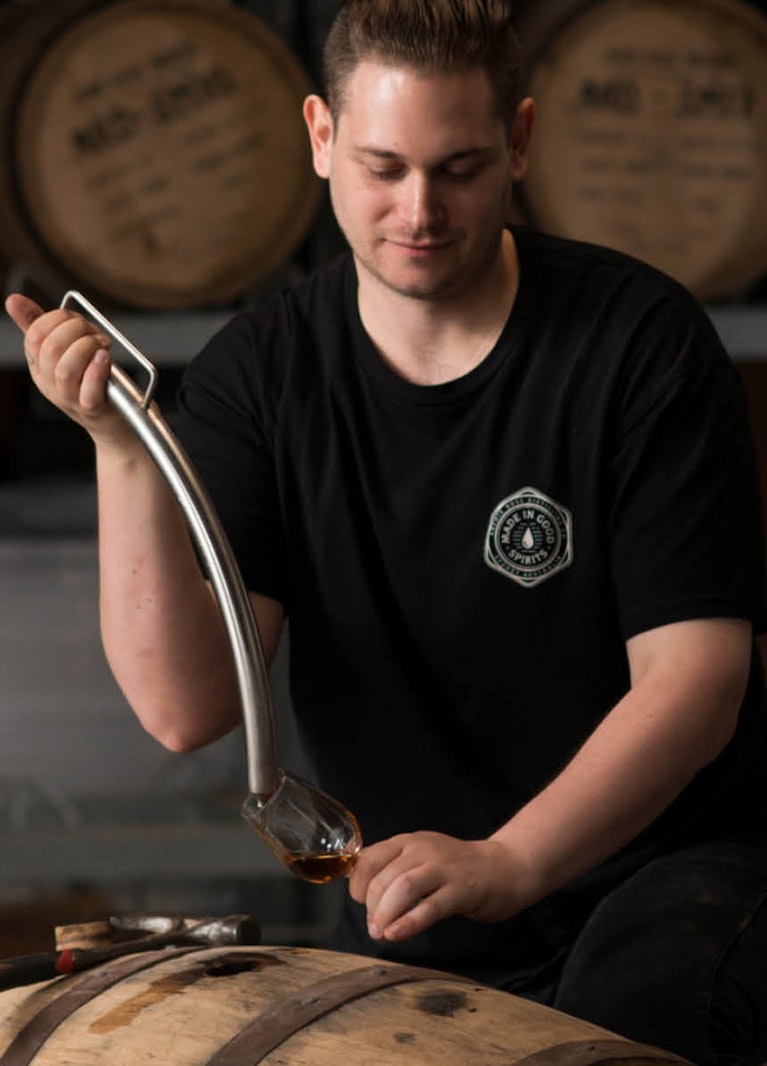Question Everything with Dave Withers
Our interview series, “Question Everything”, is a dedicated space for us to dive deep into the stories behind our process, our people and our interests. This spirit of inquiry rests at the heart of everything we do at Archie Rose.
Whisky is a spirit rich in legends, and we’re lucky to have many celebrated traditions from which to draw. While we continue to learn so much from long-established ways, what ultimately drives us is a deep curiosity and desire to create exceptional Australian whisky through constant innovation. This month, we sat down with our Master Distiller and Guest Editor of this Journal, Dave Withers, to drain the dram on Archie Rose’s innovation in whisky.

Hi Dave, what made you decide to distil whisky? How did you get into whisky?
It's a winding road, but it's best to start at the beginning. I was born into a family of winemakers. My father was a winemaker who turned to academia, and my grandfather was a chemist who loved wine and became a winemaker. My school holidays were split between labouring in the winery (think scrubbing out tanks that only I could fit into), ad hoc lessons on wine chemistry and long car trips to visit the major wineries of Australia. By age ten, I had been to every major wine-growing region of Australia at least once. So, there was a certain inevitability for me to step into the liquor trade. For a while, I thought it would be wine that stuck with me. However, when I met my wife, she was not much of a wine drinker, so to lighten the mood, we began to drink whisky as that was her tipple of choice socially. What started with a casual interest became an obsession. After working with whisky for many years, doing everything from brand ambassadorial work to liquor retail, I found that I longed not merely to tell other brands' stories but to help build something myself. By chance, I met Archie Rose founder, Will Edwards, who was building a distillery in the middle of Sydney. We got talking, and he was looking for someone to come on as production manager. I like to think he took a bit of a chance on me, and I took one on him.
What should we know about the way that Archie Rose makes whisky?
When we started producing whisky in 2014, we began with a fairly traditional process. Nothing too quirky. But before long, there was this lingering question that kept cropping up, which was "why?". The first stage of this question was the brewing of base. There is a large beer market in Australia, so the malt readily available to distillers was brewers' malt. This grain gave us less booze than what most traditional distillers get to use. The folklore at the time was that the brewers' barley gave more flavour, but no one had tested that idea. I had done a lot of studies by this stage and could compare what we were doing to the model in Scotland. We were definitely getting less booze. So, if we could improve efficiency to be close to the Scots, then shouldn’t we explore that further? However, if the flavour is truly better with brewers malt, how far could we take that idea? Could we sacrifice all of the yield and make a powerfully aromatic spirit? We looked at a wide range of different malts, including those treated differently, from various locations and made from different varieties. We discovered a huge diversity of flavours possible with malted grain. Both the variety and malt treatment methods made a huge difference to the spirit. So we landed on a mash bill of malts, which gave the spirit enormous character.

How has the Archie Rose approach to whisky-making evolved?
In 2017, we began working on our new Banksmeadow distillery. We had the ability to design a distillery that took on the learnings of our early trials. I noticed that when making a mash bill, we get enormous, complex, and rich flavours. However, the process had a flaw. It, in some ways, averaged out the differences between the grains. For example, if a distiller would like to make a big cereal-forward spirit, a later hearts cut is typically taken on the spirit still. For a fruitier spirit, then an earlier cut would be necessary. So, to showcase the fruitiness of our pale malt and the cereal character of our amber malt, a compromise must be made. No distiller could not get the absolute best result by bringing these grains together in a mash bill. So, we decided to separate out the six malted barley and three malted rye styles into individual streams. In other words, that unique malt is mashed, fermented and distilled on its own. In this way, we could optimise the process to create a spirit that gives the best example of that grain. We let the grain tell its story and, in many ways, guide the process.
For each grain, we meticulously mill, mash, ferment, wash, distil, spirit distil and barrel age separately. We use five different types of yeast across the spirit styles. Even the type of casks vary. Some spirit goes into Australian apera (fortified wine), and others into sherry casks. We aim to create a diversity of flavour with unique and charismatic spirits that can be brought together to create even more complexity, intensity and personality. The result has been that we have produced over fifteen types of unique malted whisky spirits. Each has its own recipe for each stage of the process. We have levers we can pull when we look to bring these spirits together for a final product. If there is not enough fruit, we can add more of our pale malt spirit (which is extremely fruity in itself). If there is not enough depth, we may use some of our spirit made with crystal malts. We have found that this has allowed us to layer complexity and depth, ensuring that we are not beholden to what the process deems to give us.
Why is questioning everything important to your process?
In many ways, the distinct flavours of our whisky are born from the spirit of inquiry. That question, "Why?" is our constant companion. If the answer is merely tradition, the next question should be, "But is there a better way?". While Australian whisky has a long and illustrious history (it was legal to distil in Australia before it was legal in Scotland), it is discontinuous. This gives us the freedom to break the rules if, indeed, the rules need breaking. However this challenger mindset is not about change for change's sake. So often, we find ourselves reintroducing traditions that are long lost to find a better way of making spirit.
A good example is the variety of barley we malt called "Cape." It was grown in Australia in the 1800s and has a truly phenomenal flavour. Sometimes, the old ways are the best, but that does not mean we should be closed off from what we could make our spirit into.
What’s so special about making whisky in Australia?
Being Australian is fundamental to our whisky. It is our reason for being. We want to represent our experience as Australian whisky drinkers and creators in every product we produce. This comes across clearly in the raw materials that we use and the maturation environment.

You’ve said before that "great whisky starts in the field, not in the distillery" —how does the life of the grain impact flavour?
One of the most fundamentally important ingredients in whisky is grain. That seems like such a bland statement. But it is so very easy to forget about the grain and focus on rustic casks or shiny stills. It might be because of my background in wine, but I have always looked at the base grain and how it is treated as the most important part of whisky making. The grain itself determines how it should be mashed, the flavours of fermentation and the cut points in the still. How a grain is grown, harvested, malted and brewed sets the foundation for every other part of the whisky production process.
We use varieties of barley and rye that have deep roots in Australian agriculture. All it takes is to be out in the fields of central New South Wales during harvest to see the climate is in stark contrast to the rest of the world. My first harvest was a transformative experience. There I was, standing in a field in forty-degree heat with the red ochre earth at my feet, the big deep blue sky above with gum trees lining the paddock. How could grain grown under these conditions taste the same as that from overseas?!
It was a romantic idea, but was there science in the theory? To satisfy the query, we set about importing malt from Ireland, the US and central Europe. The whiskies made with those grains just tasted different. We placed the spirit through expert sensory panels; the results were stark. There was something unique about Australian grain, after all. We took that discovery to heart and went deep into exploring Australian grain. Whether it is heirloom varieties that have adapted to microclimates in regional Australia or outdated species that were initially grown over a century ago in Australia, the grain speaks of where it came from. The key is for the distillery to allow the grain to have a platform consciously. Rather than forcing it to become something it is not, the best grain forward whiskies let the raw material explain itself. The distilling process should nurture that and allow it to be its best self. As a distiller, we could force an heirloom variety to try to behave like a mundane variety. And if we did, it would disappoint every time. Rather, we want to let the grain guide our process. By allowing the grain to call the shots, we have unlocked the nature of the grain, whatever that might taste like.
What’s next for Archie Rose in the world of whisky?
The team is really looking forward to offering up more whiskies with different varieties that give you a difference in flavour. They are maybe a while away yet, but some of the individually distilled grain varieties are just stunning. We have spirit maturing made from varieties that have never been distilled before, and other spirits give alternate histories to Australian whiskies. We cannot wait to share them with you.